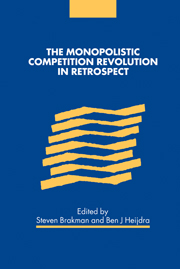Book contents
- Frontmatter
- Contents
- List of contributors
- Preface
- 1 Introduction
- Part I Underground classics
- Part II Current Perspectives
- Part III International trade
- Part IV Economic geography
- 10 The core–periphery model key features and effects
- 11 Globalisation, wages and unemployment: a new economic geography perspective
- 12 Empirical research in geographical economics
- 13 The monopolistic competition model in urban economic geography
- Part V Economic growth
- Part VI Macroeconomics
- Index
10 - The core–periphery model key features and effects
Published online by Cambridge University Press: 22 September 2009
- Frontmatter
- Contents
- List of contributors
- Preface
- 1 Introduction
- Part I Underground classics
- Part II Current Perspectives
- Part III International trade
- Part IV Economic geography
- 10 The core–periphery model key features and effects
- 11 Globalisation, wages and unemployment: a new economic geography perspective
- 12 Empirical research in geographical economics
- 13 The monopolistic competition model in urban economic geography
- Part V Economic growth
- Part VI Macroeconomics
- Index
Summary
Introduction
More than twenty–five years ago, Avinash Dixit and Joe Stiglitz developed a simple model for addressing imperfect competition and increasing returns (ICIR) in a general equilibrium setting. Its first application, in Dixit and Stiglitz (1977), was to an issue that now seems rather banal – whether the free markets produce too many or too few varieties of differentiated products. But ICIR considerations are so crucial to so many economic phenomena, and yet so difficult to model formally, that the Dixit–Stiglitz framework has become the workhorse of many branches of economics. In this chapter, we present one of its most recent, and most startling applications – namely, to issues of economic geography. While there are many models in this new literature, almost all of them rely on Dixit–Stiglitz monopolistic competition, and among these, the most famous is the so-called core–periphery (CP) model introduced by Paul Krugman, (1991a).
The basic structure of the CP model is astoundingly familiar to trade economists. Take the classroom Dixit–Stiglitz monopolistic competition trade model with trade costs, add in migration driven by real wage differences, impose a handful of normalisation, and voilà, the CP model! The fascination of the CP model stems in no small part from the fact that these seemingly innocuous changes so unexpectedly and so radically transform the behaviour of a model that trade theorists have been exercising for more than twenty-five years.
Information
- Type
- Chapter
- Information
- The Monopolistic Competition Revolution in Retrospect , pp. 213 - 235Publisher: Cambridge University PressPrint publication year: 2001
Accessibility standard: Unknown
Why this information is here
This section outlines the accessibility features of this content - including support for screen readers, full keyboard navigation and high-contrast display options. This may not be relevant for you.Accessibility Information
- 4
- Cited by
